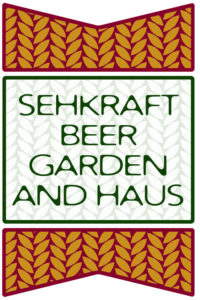
Editor’s Note: This sponsored column is written by Nick Anderson, beermonger at Arrowine (4508 Lee Highway).
While most folks I talk to in Arrowine’s Beer Department are currently going through their quadrennial bout of “seasonal creep!” outrage, I’ve been focusing on something that’s been bothering me for years — the lack of definition when it comes to Winter Ales and Lagers.
I single winter stuff out because it seems to be the set of seasonal beers that gives people the most consternation; mostly because so many winter beers give you so little information as to what style they might be, or ingredients they may use. Over the years I’ve developed some purely non-academic categories that I use as a template to keep Winter Ales/Lagers organized in my head:
Belgian-style or “Noel” Winter Ales: Think of beers like Gouden Carolus Noel, Delirium Nocturnum, N’ice Chouffe, Affligem Noel, etc. For the most part, Noels tend to be darker, with holiday-themed spices used in the brewing process. There are exceptions: among the ones I listed, N’ice Chouffe stands out for being less malty than the others, and the wonderful St. Bernardus Christmas Ale is a straight-up Quadrupiel, with its spicy character coming solely from the brewery’s house yeast strain. American versions include Blue Mountain Blitzen and Sly Fox Christmas Ale, while Mikkeller gets in on the action with his Santa’s Little Helper Ale. To paint with a broad brush, expect a Noel-style to be brown to very dark in color, with spice notes ranging from “present” to “slightly medicinal” to “is that potpourri?”
Winter Warmer: You see the term bandied about often, so what exactly is a Winter Warmer? The Beer Judge Certification Program (BJCP) guidelines lump in Winter Warmers with English-style Old Ales, due to the (generally) fuller malt character of the style, and for the most part that makes sense to me. Think of Winter Warmers generally as slightly to very malty Pale Ales or IPAs, with the malt adding extra sweetness but not always spiced — though some can be in the “Wassail” style. Sam Smith’s Winter Welcome is the archetypal example of the non-spiced Winter Warmer. Sierra Nevada Celebration Ale is classified as either an IPA or Fresh Hop Ale, but I’m OK considering it an interpretation of a Winter Warmer; also Avery Old Jubilation Ale, with its malt-forward approach. SweetWater Festive goes for the Wassail angle, throwing some cinnamon into a Winter Warmer recipe.
American-style Christmas Ale or “Anchor” style: Named for the seminal American Winter Ale, Anchor Our Special Ale (better known as Anchor Christmas Ale). In many ways, Anchor-style Christmas Ales are the descendants of Wassail-style Winter Warmers: they tend to be malt-driven Ales, after all, that use various spices (generally including nutmeg, cinnamon, clove, ginger, juniper, and others). In the American tradition however, these also tend to be more exaggerated, “bigger” in flavor and ABV. Great Lakes Christmas Ale, Schlafly Christmas Ale, Blue Mountain Lights Out and others take different passes on this style, but share a common philosophy.
“Other” or “I do what I want” Winter Ales: Some breweries strike out on their own with Winter or Christmas beers that defy style expectations. Bell’s has famously produced its Winter White Ale for years; a delicious Belgian-style Wit minus the traditional coriander, cardamom, and orange peel. Bell’s also makes a unique Christmas Ale–a 5.5 percent, malty, almost Scotch-style Ale that (when it arrived early enough) is a great beer to have with Thanksgiving dinner, and if not it’s welcome at any holiday table. Dogfish Head flipped its script last year, ceasing the seasonal bottling run of Chicory Stout in favor of the new Piercing Pils. Many still miss the Chicory Stout four-packs (myself included), but Piercing Pils is a well-made Lager from an unexpected source, and has already earned more than its share of fans (again, myself included). (more…)





